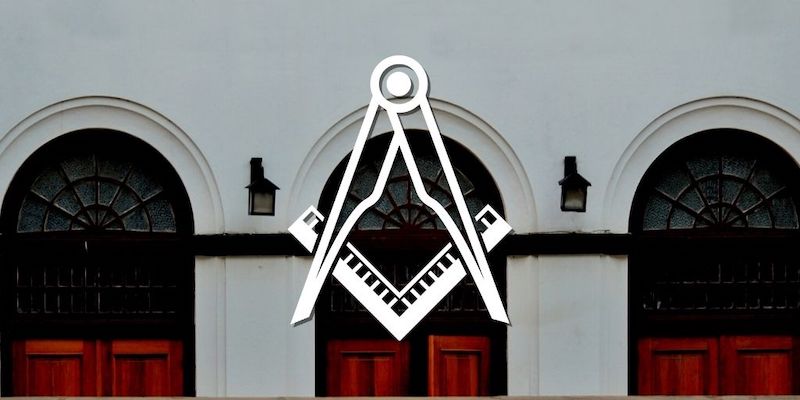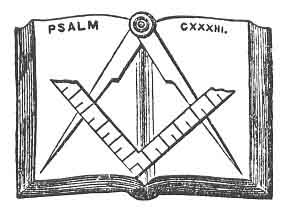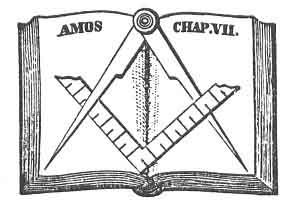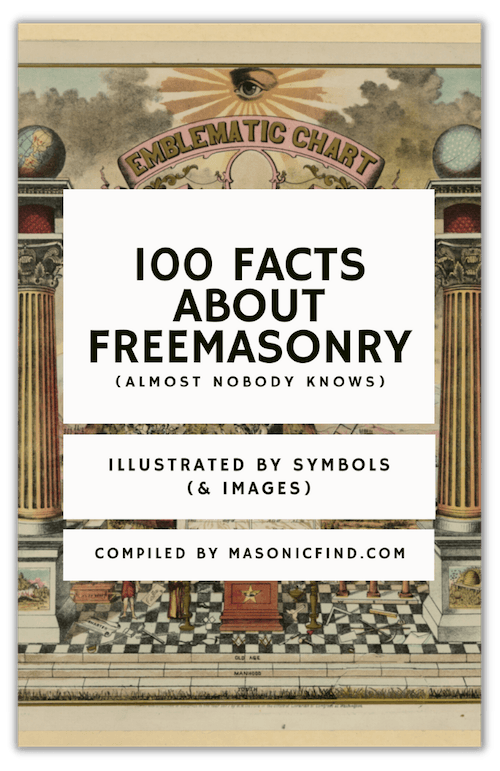In Freemasonry, there are three primary degrees that members progress through to advance in their Masonic journey.
These are the Entered Apprentice, Fellow Craft, and Master Mason degrees.
The Entered Apprentice and Fellow Craft degrees are the first two steps in this journey, each with unique characteristics and lessons for the members participating in them.
The Entered Apprentice Degree (EA) is the first degree in Craft Masonry, where the journey begins for each Mason.
It serves as an initiation into the fraternity, introducing new members to the organization’s rituals, symbols, and teachings.
On the other hand, the Fellow Craft Degree (FC), known as the second degree, represents a Mason’s passage through the Craft, allowing them to expand their knowledge and further develop their skills.
Both the Entered Apprentice and Fellow Craft Degrees are essential steps in the path of becoming a Master Mason, in which members explore the deeper meanings and principles of Freemasonry.
The unique experiences and teachings encountered in these degrees prepare a Mason for their eventual progression to the highest rank in the organization.

The Entered Apprentice Degree

Initiation Process
The Entered Apprentice Degree is the first degree in Freemasonry and marks the beginning of a Freemason’s journey.
During the initiation process, candidates receive important teachings and engage in symbolic rituals designed to impart Masonic values, such as brotherhood, morality, and self-improvement.
Certain aspects of the ceremony may vary across jurisdictions, but the basic elements remain consistent worldwide, ensuring that all Entered Apprentices share a common foundation of Masonic principles.
Significance
The Entered Apprentice Degree represents the symbolic birth of a new Mason, marking the start of his journey towards personal growth and enlightenment within the fraternity.
This EA degree teaches foundational lessons, including the importance of brotherly love, relief, and truth.
As the candidate progresses through this degree, he begins to learn the symbolic language of Freemasonry and is introduced to the working tools associated with operative masonry, which carry symbolic meanings applicable to the individual’s journey of self-improvement.
Symbolism
The Entered Apprentice Degree is rich in symbolism, reflecting the unique history and values of Freemasonry.
The initiation ceremony involves various symbols, such as the apron, which denotes purity and innocence, as well as the working tools that are specific to this degree – the 24-inch gauge and the common gavel.
The 24-inch gauge represents the proper organization of one’s time, dividing it into equal parts for work, rest, and the service of others, while the common gavel symbolizes the removal of any unnecessary parts of one’s personality to reveal the inner self and pave the way for personal growth.
The Fellow Craft Degree

Advancement Process
The Fellow Craft Degree is the second degree of Freemasonry, following the Entered Apprentice Degree.
In order to progress from the Entered Apprentice Degree to the Fellow Craft Degree, a candidate must demonstrate a sufficient understanding of the lessons and values imparted in the first degree.
This typically involves an examination of the candidate’s knowledge, as well as their dedication to the tenets of Freemasonry.
Once they have satisfied the requirements, the candidate participates in an initiation ceremony, where they are formally introduced to the Fellow Craft Degree.
Significance
The Fellow Craft Degree represents the intermediate stage in a Freemason’s journey.
It symbolizes the period of learning and growth, wherein the candidate acquires new knowledge and mastering their craft.
The teachings in this degree focus on broadening the member’s understanding of both the practical and the philosophical aspects of Freemasonry.
During the Fellow Craft Degree, the candidate is introduced to the seven liberal arts and sciences: grammar, rhetoric, logic, arithmetic, geometry, music, and astronomy.
These subjects are intended to expand the candidate’s intellectual capacities and emphasize the importance of personal growth and self-improvement.
Symbolism
As with all Masonic degrees, the Fellow Craft Degree is rich in symbolism. These symbols help to convey the lessons and values taught during this stage of a Freemason’s journey.
One of the primary symbols associated with the Fellow Craft Degree is the Square and Compasses, which represent the tools used by an operative stonemason in order to construct a perfect edifice.
This symbol is meant to remind the candidate of the importance of moral rectitude and maintaining a balanced life.
Another prominent symbol in the Fellow Craft Degree is the winding staircase, which represents the Freemason’s journey from ignorance to enlightenment.
The staircase, composed of three, five, and seven steps, carries various interpretations and allusions to the principles of Freemasonry.
For example, the three steps may represent the three degrees of Freemasonry, while the five steps are associated with the five orders of architecture, and the seven steps correspond to the seven liberal arts and sciences.
The Key Differences
| Entered Apprentice Degree | Fellowcraft Degree | |
|---|---|---|
| Symbolic Meaning | Represents birth and the beginning of a Masonic journey. | Symbolizes growth and development in Masonic knowledge. |
| Required Knowledge | Introduction to basic Masonic principles, rituals, and practices. | Builds upon the lessons of the Entered Apprentice degree. |
| Emphasis | Focuses on morality, self-improvement, and personal responsibility. | Emphasizes intellectual development and education. |
| Working Tools | The 24-inch gauge, common gavel, and chisel. | The square, level, and plumb rule. |
| Degree Lecture | Explores the concepts of initiation, darkness to light, and the pursuit of knowledge. | Expands on the symbolism of the working tools and further philosophical teachings. |
| Rituals | Includes the ceremony of initiation, the cable tow, the ancient charges, and the symbolic penalties. | Involves the symbolic journey of Hiram Abiff and the search for hidden knowledge. |
Rituals and Ceremonies
The Entered Apprentice Degree is the first stage of Freemasonry membership and marks the beginning of becoming a Freemason.
During this degree, the candidate participates in a ritual drama designed to teach moral and ethical lessons.
This degree focuses on the importance of trust, brotherly love, and the symbolic representation of the Entered Apprentice’s working tools (the 24-inch Gauge, the gavel, and the chisel).
The Fellow Craft Degree, on the other hand, is the second degree in Freemasonry and represents a deeper understanding of the craft.
The ritual drama in this degree focuses on further Masonic education, with emphasis on the principles of the liberal arts and sciences, as well as the symbolism of the two pillars, J***** and B***, at the entrance of King Solomon’s Temple.
This degree also includes the introduction of the plumb, level, and square as symbols of morality and virtue.
Roles and Responsibilities
An Entered Apprentice is expected to demonstrate commitment to the fraternity, support its activities, and learn the basic tenets and principles of Freemasonry.
He is to be mentored by a more experienced Mason, who will guide him through the process of improving himself and integrating into the Masonic community.
The Entered Apprentice’s main responsibilities include attending meetings, studying Masonic teachings, and developing relationships with fellow members.
As he progresses through this first degree, the Entered Apprentice will gradually embody the foundational principles of Freemasonry.
In contrast, a Fellow Craft has already completed the Entered Apprentice Degree and is now focused on further personal development and a more profound understanding of Freemasonry.
His responsibilities include mastering the liberal arts and sciences, engaging in Masonic education, and actively participating in the fraternity’s social and charitable activities.
By the end of the Fellow Craft Degree, the Mason is expected to have a more comprehensive understanding of the craft and be prepared to advance to the third and final Master Mason degree.

FREE DOWNLOAD: 100 FACTS ABOUT FREEMASONRY (ALMOST NOBODY KNOWS)
Join the 10,000+ Brethren from around the world inside our weekly Masonic newsletter and get our best selling ebook for free (usual value: $20).
The Entered Apprentice Degree and the Fellow Craft Degree serve as essential steps in an aspiring Mason’s journey of self-discovery and personal development.
The Entered Apprentice Degree marks the beginning, focusing on the fundamentals of Freemasonry and introducing new members to its symbols, rites, and rituals.
The Fellow Craft Degree, on the other hand, represents the second stage of evolution within the fraternity.
It further expands on the principles introduced in the first degree and allows Masons to delve deeper into the philosophical and intellectual aspects of the craft.
Both degrees contribute significantly to the overall Masonic experience by combining ancient teachings with present-day realities.
Through the Entered Apprentice and Fellow Craft Degrees, Freemasons are equipped with the necessary knowledge and tools to engage in continuous self-improvement and contribute positively to society.